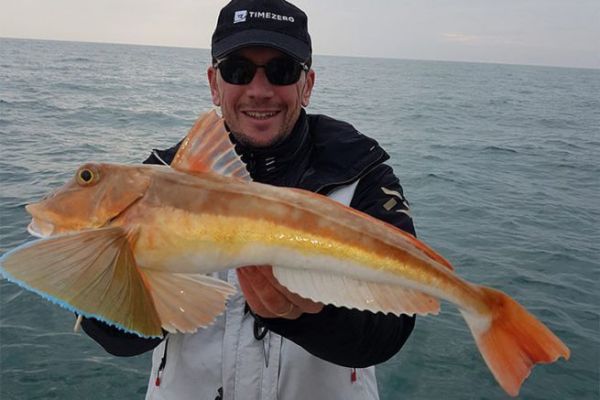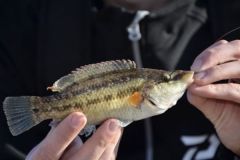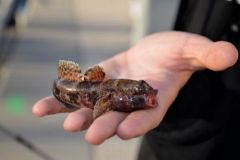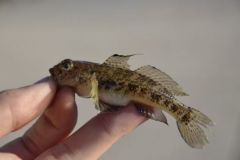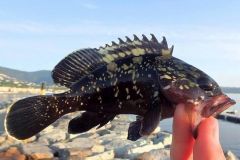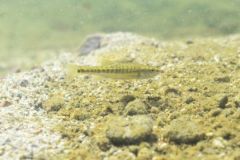Scientific name
Chelidonichthys lucerna (Linné, 1758)
Morphology
The gurnard, commonly known as the perlon gurnard, has a tall head and tapering tail. A distinctive feature of the perlon gurnard is the presence of two long pectoral fins with bright blue edges that contrast with the red body. The gurnard also has two dorsal fins: the first spiny, triangular and short, the second soft and long, extending to the tail. Its overall coloration is more or less red, sometimes orange, with a creamy-white belly.
Fishing grounds for red mullet
The gurnard lives close to sculpted rocky coasts where depths can quickly reach over 30 meters. It is the largest member of the gurnard family. Its tactile pectoral fins are sensory organs that help it find food on the seabed. In certain areas, particularly over wrecks and ridens, it sometimes climbs to the surface to hunt fish. Gurnards generally live in small groups and are sometimes solitary. Occasionally present in France, they are a particular victim of greater amberjacks in the Mediterranean.
Fishing techniques
The gurnard is fished mainly on the bottom. It hunts fish on sandy ridges and responds well to metal spoons. They are also caught on soft lures over wrecks, often without looking for them.
Lure-bait cocktails work well: madai-jigs with pieces of squid on the hook or tenyas with pieces of mackerel or horse mackerel.
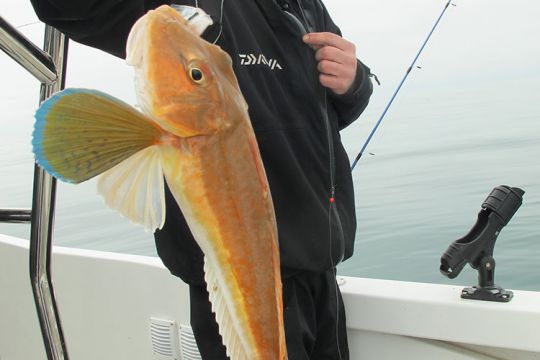
Reproduction
Gurnards reach sexual maturity at 20 cm in length. Spawning takes place from May to June in the Atlantic and from December to April in the Mediterranean.
Size and weight
- Catch size (legal minimum): none, I recommend 25 cm
- Size at sexual maturity: 20 cm
- Average size: 35 cm
- Maximum size: 75 cm (6 kg)
- National record: 2.84 kg (Charente Maritime, Poitou-Charentes, 30/06/2004)
Good to know
The gurnard owes its name to the growl it emits when approaching danger. This sound is produced by the vibration of the swim bladder under the action of special muscles.
